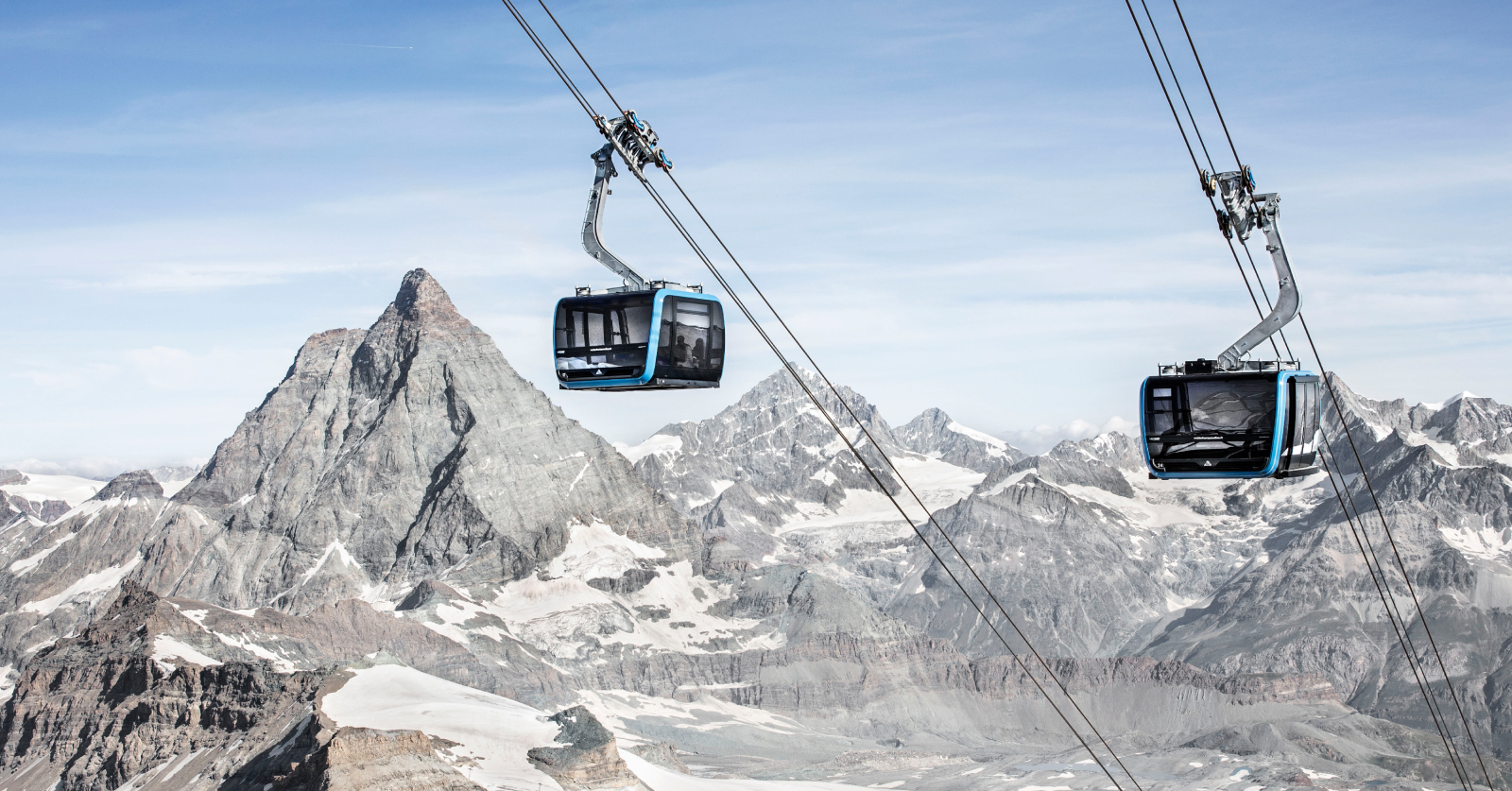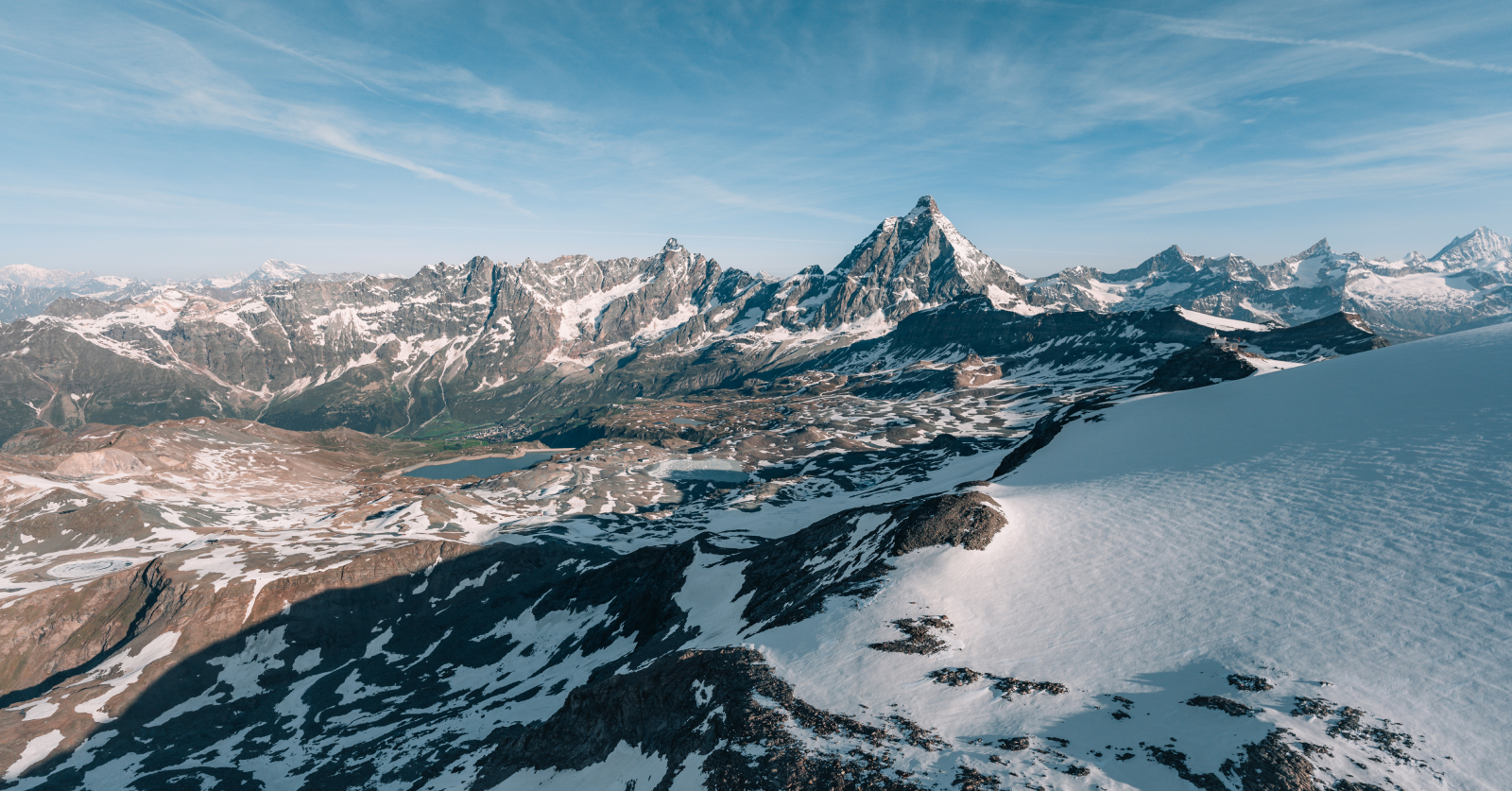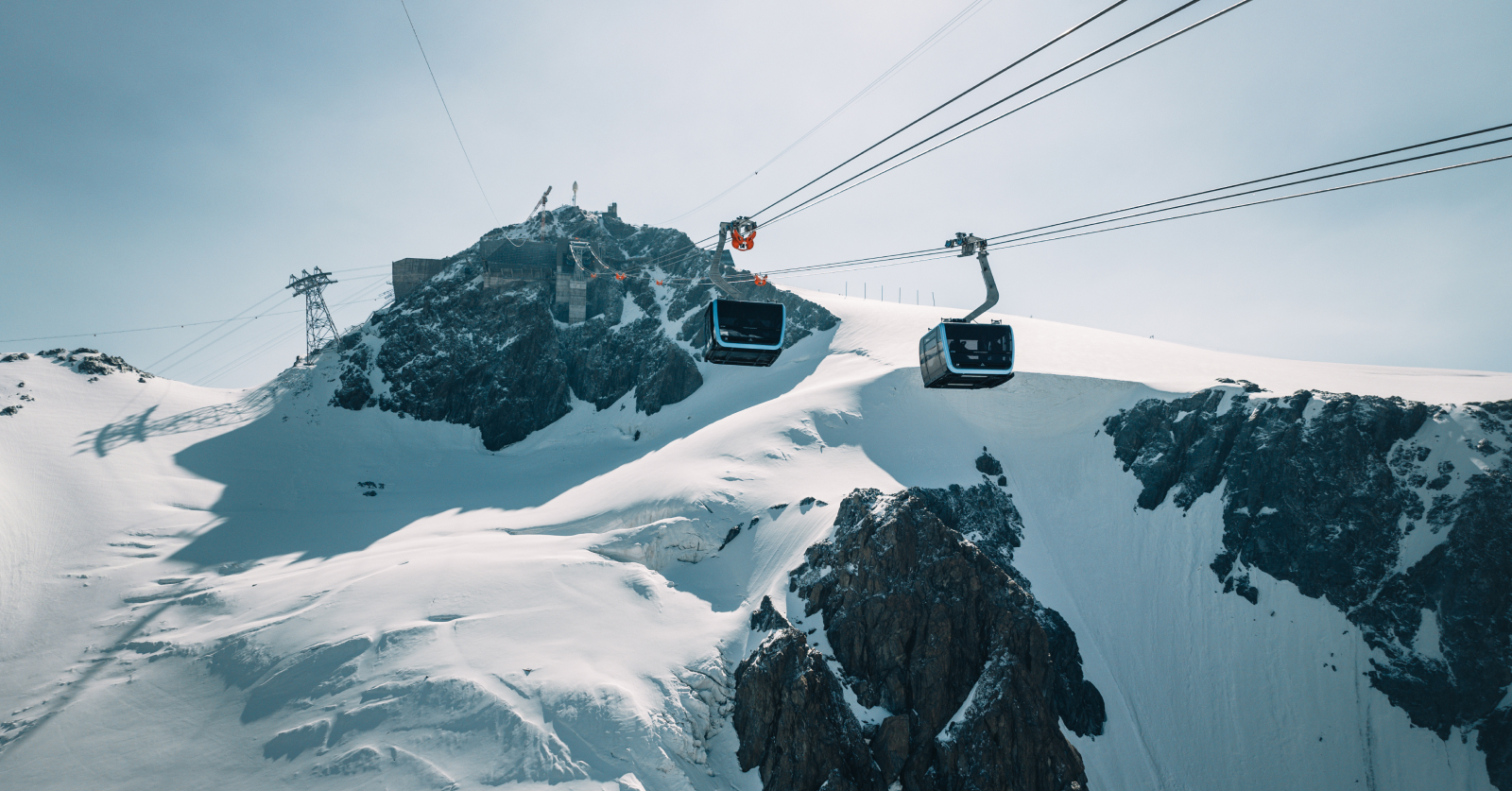Zermatt Bergbahnen: Building bridges for a more sustainable world

The Zermatt Bergbahnen AG transports visitors to the most beautiful hotspots in the region. With its comprehensive sustainability strategy, it ensures that nature remains as it is, in order to preserve its beauty for future generations. Here you can find out more about Zermatt Bergbahnen AG and why it has been awarded the highest “Swisstainable” rating.
The Matterhorn Glacier Paradise is one of the most popular attractions in Zermatt. High up at 3,883 metres above sea level, you can let your gaze wander – the highest mountain station in Europe rewards visitors with views of 38 four-thousand-metre peaks and 14 glaciers. And in the Glacier Palace, they can enjoy a unique experience in the midst of eternal ice.
In the summer of 2023, the Matterhorn Alpine Crossing opened for business, enabling guests to cross the Alps at the highest altitude by cableway. With the completion of the section between the Matterhorn Glacier Paradise station and Testa Grigia in Italy, the long-held vision finally became a reality. Connecting people and cultures across borders -by cableway! The barrier-free construction makes this experience accessible to everyone. But Zermatt Bergbahnen is not only a pioneer in this regard, but it also takes a far-sighted approach to sustainability issues.
Zermatt Bergbahnen has developed a concept for a sustainable skiing and hiking resort already years ago. The measures are comprehensive: environmental support, continuous remediation of all environmental damage, advice on all environmental issues and the preparation of environmental reports. In addition, it invests around one million francs annually in environmental projects. A lot of money that achieves a lot.

On the sunny side of Switzerland Recent years have been marked by numerous challenges, and rising energy prices continue to cause unrest for both private households and businesses. Operating a mountain railway requires high energy resources. And it’s expensive. But Zermatt is also known as the sun lounge of Switzerland – and rightly so. With an average of 2,500 hours of sunshine per year, Zermatt leaves Ticino or Zurich far behind. This is exactly what Zermatt Bergbahnen AG has taken advantage of.
The Matterhorn Glacier Paradise restaurant has held the Minergie-P certificate since 2009, which stands for the highest energy efficiency and is linked to strict requirements. This makes it the highest building with this certification. But it is not just a matter of using energy resources sparingly, because the restaurant also produces its own electricity. 108 solar modules with a total area of 195 square metres supply around 35,000 kilowatts of precious solar power annually. Zermatt Bergbahnen AG was awarded the Swiss and European Solar Prize for new buildings in 2010 for its energy concept. But the restaurant’s photovoltaic system is not the only one. 99 solar modules also provide an annual yield of 20,000 kilowatts at the Matterhorn-Express on Trockener Steg station. A little further down, at the 3S mountain station, 485 solar panels produce further sustainable electricity, equivalent to the annual consumption of around 35 households.
However, it is not just energy use that has been considered, water supply also plays a central role at Zermatt Bergbahnen AG. The complex transport of drinking water to almost 4,000 metres above sea level forces careful use of this resource. The waste water from the kitchen and the wet rooms is therefore collected, cleaned in a microbiological treatment plant and reused several times as grey water for the sanitary facilities. The recycled water gets a second chance in the sanitary facilities, thus promoting the effective use of every single drop. Excess treated water is returned to the natural water cycle of the environment, closing the sustainability cycle.
In harmony with nature Groomed slopes and endless descents in the midst of breathtaking scenery make Zermatt one of the world’s preferred winter destinations. But the numerous guests also leave their mark – especially when freeriders go of the marked slopes in search of fluffy powder snow. This is also the habitat of many hibernating wild animals, which are disturbed by snow sports enthusiasts and whose protective forests are damaged. This is where the measures of the Swiss cantons come in, which have defined wildlife rest zones and wildlife protection areas to protect flora and fauna. There are six protected forests and ten wildlife conservation areas in Zermatt. Black grouse, chamois, deer, snow hares, ptarmigan and ibex live here. These zones are not allowed to be used in winter, and violations are punishable by law.

Building bridges in Myanmar
Safety is a top priority for Zermatt Bergbahnen AG. That is why it continuously carries out inspection and maintenance work on its facilities in the Matterhorn Paradise. The condition of the hauling and carrying ropes is also analysed in detail. Depending on the type of rope, these are replaced every seven to 15 years. But what happens to them? The strong ropes don’t end up in the bulky waste but are reused on the other side of the world.
For several years now, Zermatt Bergbahnen AG has been sending the discarded ropes to Myanmar and other destinations. More precisely to the Swiss bridge builder Toni Rüttimann, better known as “Toni el Suizo”. So far, Rüttimann has built 23 bridges with the ropes from Zermatt, helping 138,000 people. The hauling ropes of the Trockener Steg – Matterhorn Glacier Paradise aerial tramway, delivered in 2014, are sufficient for at least 20 more bridges. These will make life easier for another 120,000 rural residents.
Zermatt Bergbahnen AG × Swisstainable
Zermatt Bergbahnen AG participates in Switzerland Tourism’s sustainability programme and plays a leading role here. For its overarching commitment to sustainability, it was awarded the highest distinction “Leading” within the framework of the programme.


